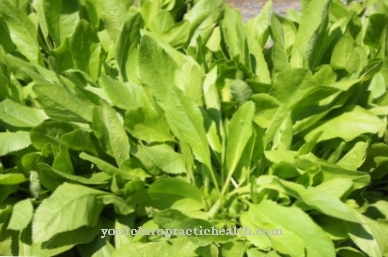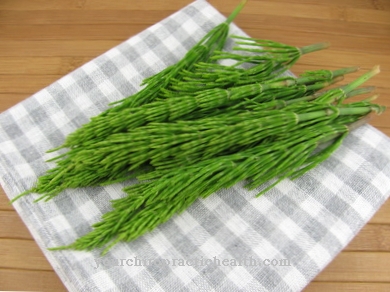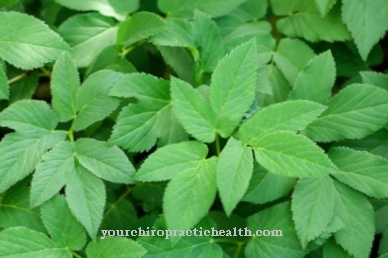Of the hyssop is a mint family and therefore closely related to thyme or sage. Like these two, it is known as a herb used to flavor dishes. In addition, hyssop is also a medicinal plant with a wide range of uses.
Occurrence & cultivation of hyssop

hyssop is also under the popular names Vinegar herbs, Josefskraut, Verbena, Isump or Weinespe known. Hyssop is a vigorous plant and loves sunny locations. Hyssop can also be cultivated on the windowsill without problems; the once graceful plant will turn into a bush within years if its growth is not controlled.
This is done by regularly cutting back the shoots, this procedure does not affect the medicinal herb and therefore it does not die, because hyssop is considered insensitive and resistant. Just like its botanical relatives, sage, thyme, rosemary, and lavender, hyssop is a perennial mint family.
The shoots of the hyssop bush can grow up to half a meter high. Its stems with the stemless, elongated, rosette-shaped leaves are typical. The blossoms of the hyssop bush are beautiful purple in color and grow in so-called false spikes. In contrast to its botanical relatives, hyssop is far less known to us, but it is one of the healthiest herbs of all.
The original home is the Middle East, but the hyssop bush is also indigenous to the wild in southern Europe. Because of its healing powers and decorative appearance, hyssop is a popular garden and houseplant.
Effect & application
The tradition of hyssop as a medicinal plant can be traced back to the Middle Ages. With its impressive flower candles, hyssop was already part of every monastery garden. It is said that the monks brought the medicinal herb back home with them on their long hikes over the Alps and then continued to cultivate it there. If hyssop has too little sun, it by no means dies, but it slows down its growth.
As far as the nature of the soil is concerned, hyssop is undemanding, and the medicinal herb does not necessarily have to be fertilized in the garden. In our part of the world, hyssop is most likely to be found in the wild on stony ground. Hyssop found its way into the kitchen and medicine through the monastic tradition of the Middle Ages. So although once known and valued aromatic and medicinal plant, hyssop has been forgotten since the end of the Middle Ages.
An incomprehensible development, because hyssop does not need to hide behind other medicinal herbs when it comes to healing powers, flavor and taste. The taste of hyssop is described as very spicy and pleasantly bitter, reminiscent of a potpourri of mint, sage and rosemary. The whole plant is edible and the best time to harvest the fresh hyssop begins in spring. If you want to wait until the flowers are harvested, you have to wait until June.
In the meantime, hyssop is also cultivated on smaller areas of the naturopathic pharmaceutical industry, which does not cause any problems due to the undemanding growth. As a culinary herb with a bitter note, hyssop goes well with alcoholic cocktails, but also with legumes or meat. Gourmets especially love the typical spicy taste in stews such as goulash or roulades. In France hyssop cannot be missing in any herb quark.
There the dried, mashed hyssop is also sprinkled over peach compote or apricot cake. As a tea preparation, hyssop can be drunk either individually or in combination with other aromatic and medicinal herbs as a preventive measure or for therapy. Fresh or dried hyssop can be used to prepare a tea infusion. As with many other herbs, the valuable ingredients of hyssop are not lost through the conserving process of drying.
Importance for health, treatment & prevention
The cooled tea infusion can also be used as a gargle solution for sore throats or irritations of the oral mucosa. Due to its chemical composition with its high content of bitter substances and essential oils, hyssop is of great health importance. Hyssopites, a wine flavored with hyssop herb, is also known from Roman times.
Botanical-chemical analyzes were able to detect so-called flavon glycosides such as hesperidin and diosmin, as well as tannins, choline, malic acid, large-molecule sugars, resin and the dye hyssopin in the entire plant. The totality of these ingredients is probably responsible for the extensive medicinal effect. Hyssop is suitable for the treatment and prevention of a wide variety of ailments. According to empirical data, internal use should not only stimulate appetite, stimulate digestion, and inhibit inflammation, but also have a diuretic, antispasmodic, analgesic and blood-purifying effect.
In order to best benefit from the healing properties, we recommend using the completely non-toxic herb as a tea preparation over a longer period of time. Hyssop is considered to be extremely well tolerated and has few side effects if an overdose is avoided, which can lead to unpleasant abdominal cramps. The medicinal plant has also earned an excellent reputation against all kinds of cold symptoms.
Even more serious diseases of the respiratory tract, such as chronic bronchitis and asthma, hyssop can effectively relieve us for a long time. In addition to being used as a tea or gargle solution, hyssop is also suitable as a bath additive for skin inflammations. The reason for the anti-inflammatory properties are probably fungi of the genus Penicillium, which grow on the leaves of the hyssop bush and have a broad antibiotic effect. In pregnant women, small children and babies, any type of application with hyssop should be avoided because of the risk of accidental overdose.

























.jpg)


